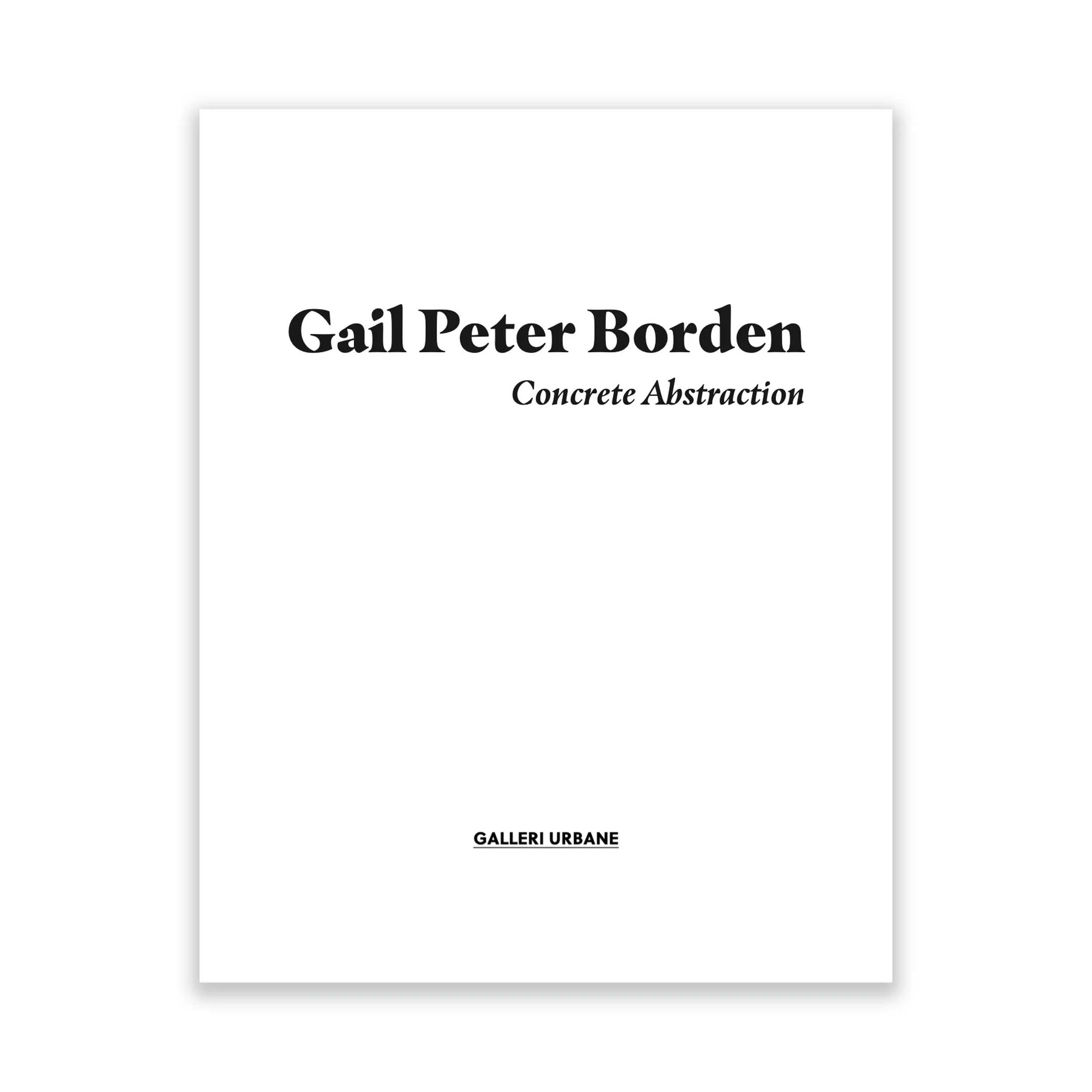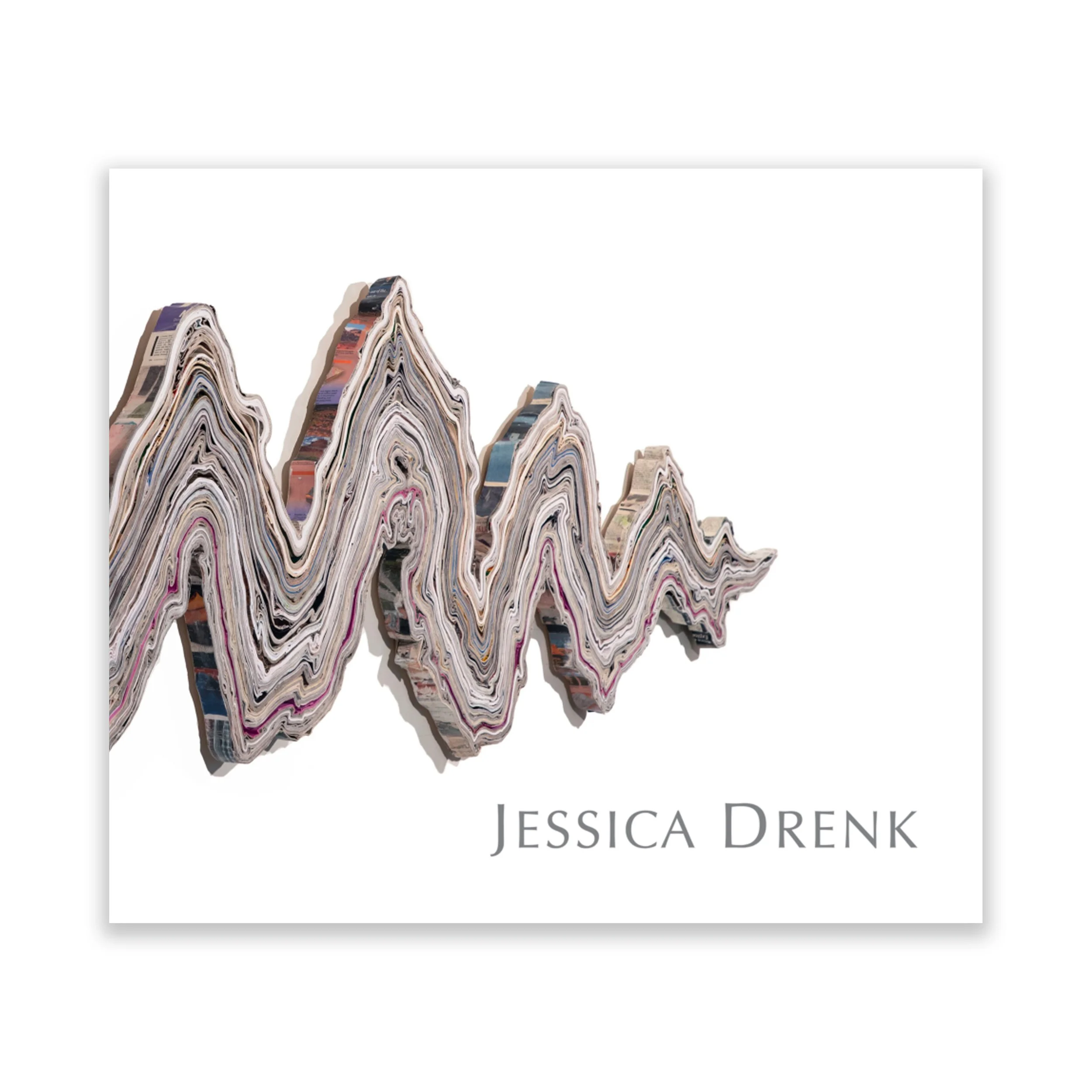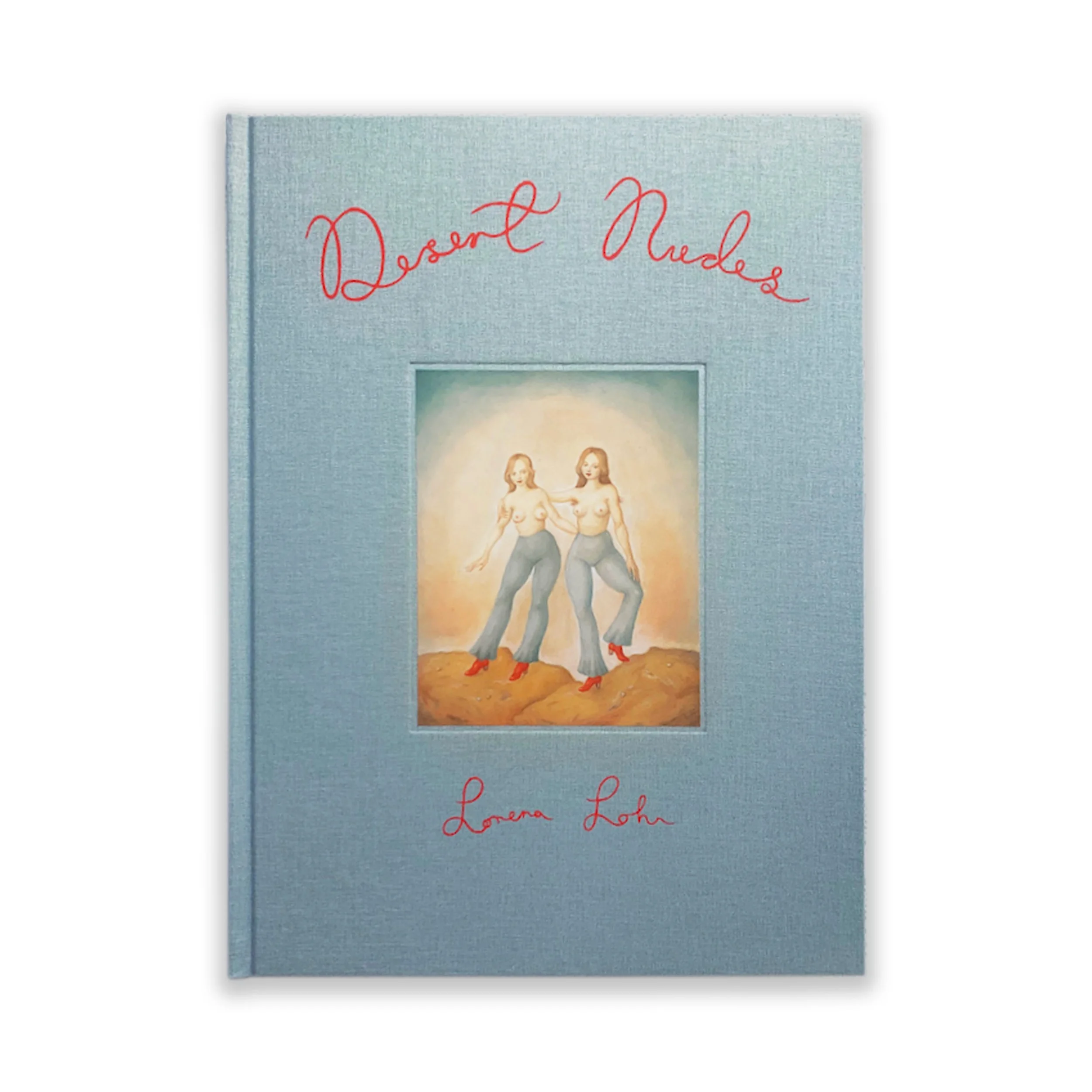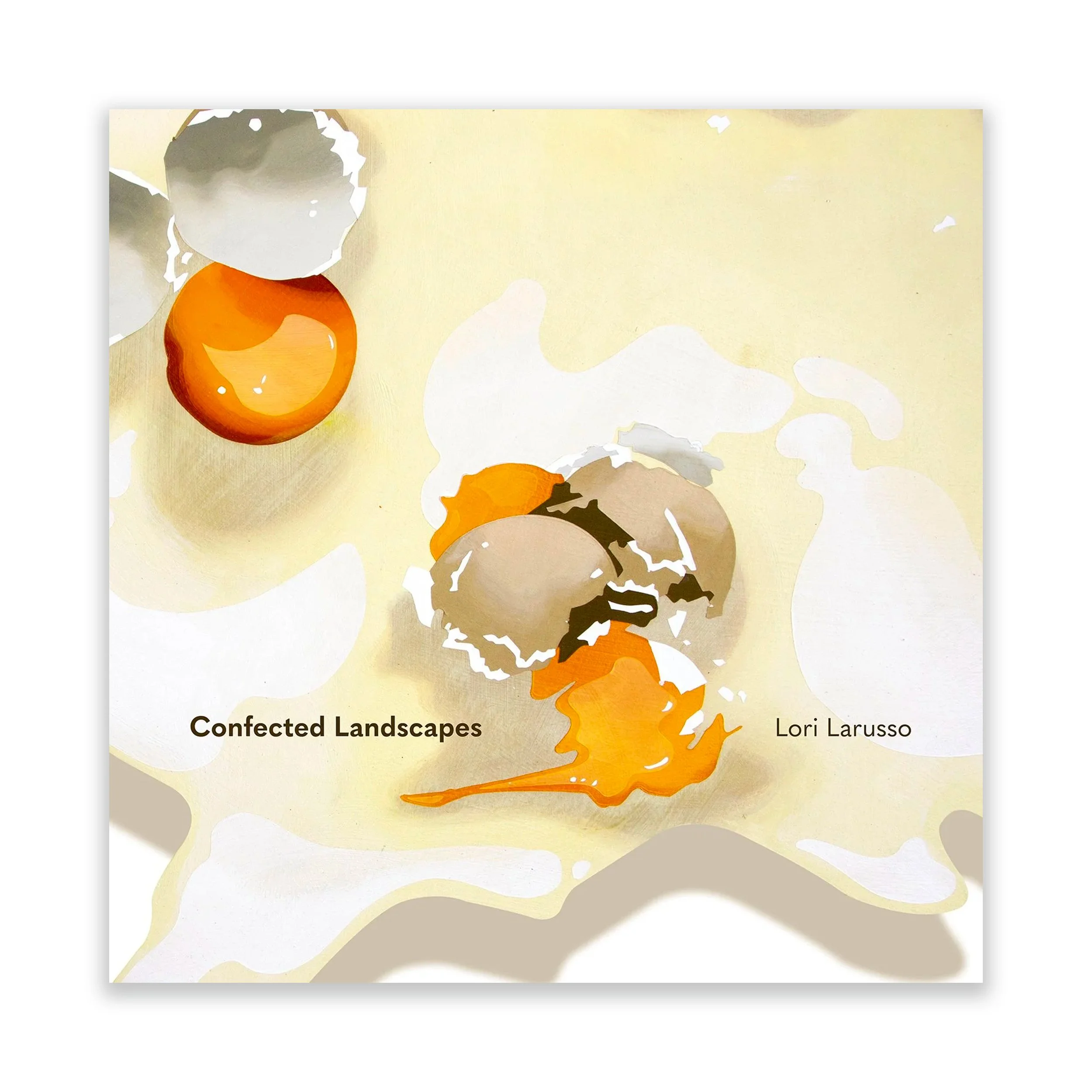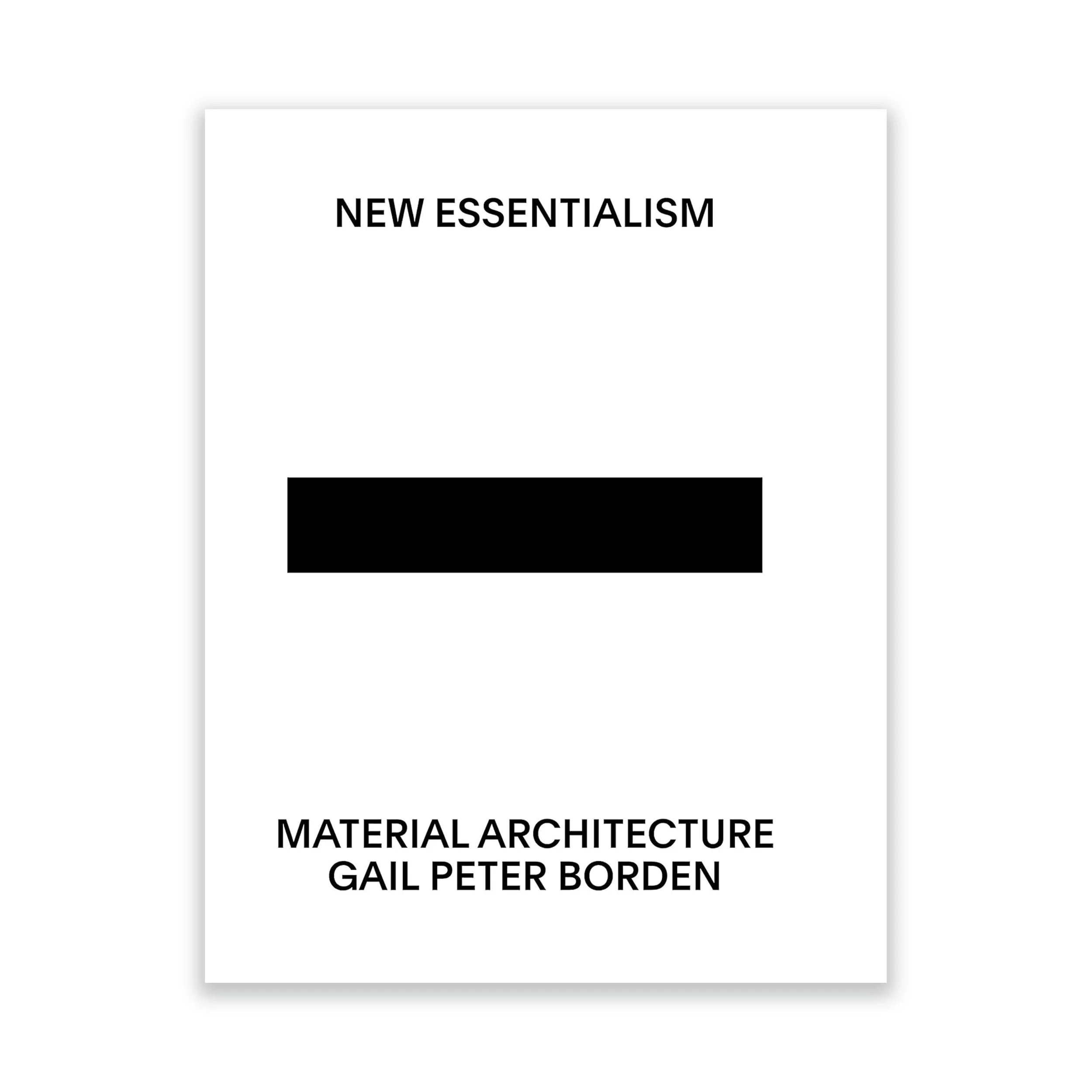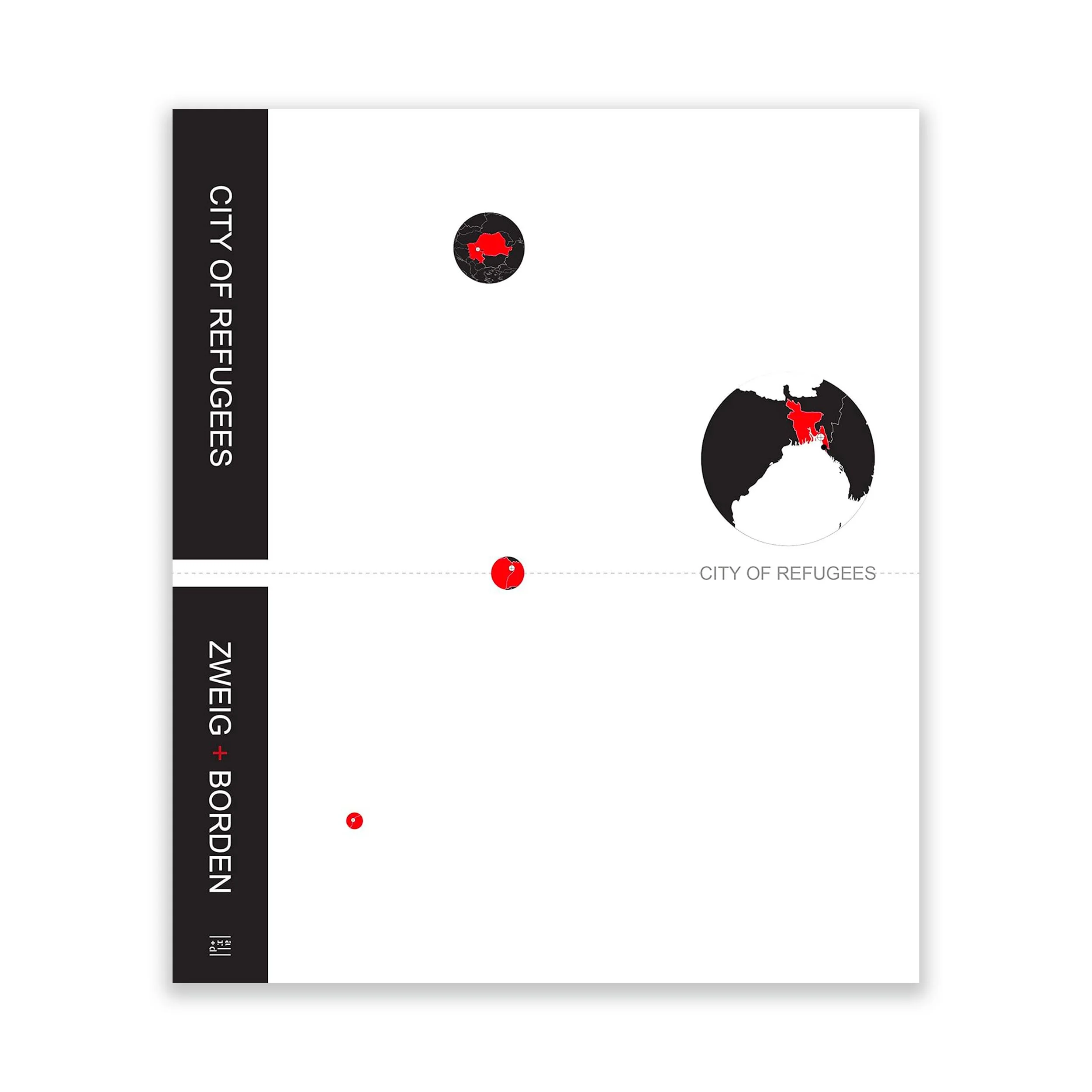GALLERY CATALOGS
Jessica Drenk – Elemental Form
Artist monograph published to highlight Jessica Drenk’s extensive exhibition history and 2025 solo exhibition at Galleri Urbane, ‘Elemental Form.’
Includes essay The Archeology of Jessica Drenk: Art for Anthropogenic Times by Art Historian and University of Texas at Arlington Curator, Dr. August Jordan Davis.
Gail Peter Borden – Concrete Abstraction
Artist monograph published to highlight Gail Peter Bordens extensive exhibition and architectural career. Published alongside his 2025 solo exhibition at Galleri Urbane ‘Figured Frames.’
Includes essay Concrete Abstraction by writer and historian Matthew Allen.
Stephen D'Onofrio – Back to the Garden
Artist monograph published to highlight Stephen D’Onofrio’s extensive exhibition history. Published alongside his 2024 solo exhibition at Galleri Urbane ‘Green Thumb.’
Includes essay Back to the Garden: Beauty and Metaphor in Stephen D’Onofrio’s Optimistic Arborist Still-Life Paintings by writer and curator Catherine D. Anspon.
ARTIST BOOKS
Jessica Drenk – Elemental Form
Artist monograph published to highlight Jessica Drenk’s extensive exhibition history. A comprehensive look at the work of artist Jessica Drenk, this monograph features color photographs covering 25 years of sculptures.
Includes essay The Archeology of Jessica Drenk: Art for Anthropogenic Times by Art Historian and University of Texas at Arlington Curator, Dr. August Jordan Davis.
Hardcover, Large Format Landscape, 13×11 inches, 144 pages.
Mel Prest – The Golden Hour
Exhibition catalog published to highlight Mel Prest’s 2022 solo museum show, The Golden Hour, at the Schneider Museum of Art.
Forward by Scott Malbaurn, Executive Director of the Schneider Museum of Art. Includes essay by poet, critic, publisher, and freelance curator, John Yao.
Click here to view Mel Press 2025 Solo Exhibition, Color Chords.
Lorena Lohr – Desert Nudes
Hardbound book covering Lorena Lohr’s series of oil paintings, entitled ‘Desert Nudes.’
Published by Soho Revue in 2024.
Limited edition of 450 copies.
Click here to view current solo exhibition, Desert Nudes, Lorena’s first at Urbane.
Lori Larusso – Confected Landscapes
This artist monograph presents images of artwork by Lori Larusso, an American visual artist working primarily with themes of domesticity and foodways. Her body of work encompasses paintings and installations that explore issues of class, gender, and anthropocentrism, and how these practices both reflect and shape culture.
Essays by art historians Dr. Emily Goodman and Dr. Miriam Kienle, as well as creative writing by Carrie Green and Molly Schoenhoff contextualize the artworks and shape the arc of the book.
Click here to view Lori Larusso’s 2022 Solo Exhibition, Care.
GAIL PETER BORDEN ART + ARCHITECTURE BOOKS
Gail Peter Borden – New Essentialism: Material Architecture
New Essentialism: Material Architecture examines how architecture engages material to create effect through five critical historical thresholds represented by analytical precedents coupled with projective experimental design project families. Unpacking the fundamental methodologies of their geometric, material, spatial, and effectual sensibilities, each threshold builds an examination that reveals the essential methods and processes of design, illustrating the basis for the argument for a New Essentialism: its characteristics, methods and the sensibilities that mark its definition.
Click here to view Gail Peter Borden’s 2025 Solo Exhibition, Figured Frames
Gail Peter Borden – City of Refugees: A Real Utopia
Of the 7.8 billion people on the planet, more than 70 million are now refugees and asylum seekers. With few countries willing to receive these displaced people, many refugees are restrained in tents, or makeshift cities. These temporary solutions often become permanent, which come with significant challenges.
City of Refugees – a three-year research by the University of Houston College of Architecture + Design under the direction of the studio professors, Peter Jay Zweig and Gail Peter Borden – offers a provocative approach to the discussion of new solutions: Four imaginary cities on four continents were designed as prototypes for the accommodation of migrants providing facilities to meet their immediate needs and long-term opportunities for their self-empowerment. The projects not only give insights into the diverse aspects of these utopias, but also chronicles the plight and journeys of refugees in contemporary society.
The current global geopolitical landscape is indelibly marked by rising national and international conflicts creating multiple regions and countries beset by massive migrations. Likewise, the consequences of climate change and man-made environmental damage are forcing people to leave their homes. Many refugees are caught between borders because fewer countries are accepting the growing numbers. This often leads to them being trapped in refugee camps: Although these expanding settlements were intended as temporary tent communities, in reality they have become increasingly permanent.
Authored by Gail Peter Borden and Peter Jay Zweig
Click here to view Gail Peter Borden’s 2025 Solo Exhibition, Figured Frames
Process: Material and Representation in Architecture: Material and Representation in Architecture 1st Edition
This book examines the interrelationship of representational methods and material systems as fundamental drivers of the design process. Identifying four primary categories of representational logics - point, line, surface, mass - each category is illustrated through four precedent projects that deploy iterative material sensibilities. As a collection, this text provides a comprehensive categorization of the architectural design process.
Through the comprehensive definition of categorical typologies, it illustrates the collective capability of this conceptual methodology. By unpacking projects through their specific design devices, the collective analysis reveals the impact of material techniques and methods of representation as a generative tool. Richly illustrated with consistent, clear and precise line drawings, the book presents a series of iconic precedents through a unique analytical and graphic sensibility.
Click here to view Gail Peter Borden’s 2025 Solo Exhibition, Figured Frames
MICHAEL BERMAN PHOTOGRAPHY BOOKS
Grasslands
This catalog documents a two-part exhibition that has sprung from the work of Michael P. Berman, a former Guggenheim Fellow, who is both esteemed in the contemporary art world and a longtime activist with several environmental organizations.
Berman’s series of photographs titled Grasslands, is about the endangered Chihuahuan Desert grasslands in New Mexico, Texas and the Northern border of Mexico, where he has wandered into the desert without a compass to, in his words, “live deliberately.” He believes that how you see the land comes down to what you value. “I believe art has a greater potential for meaning when it serves some purpose. People have started to recognize these lands as significant and this is something art can help along. If anything my work is to generate small symbols that reveal the greater complexity of things.”
Inspired by his Grasslands series guest curator Mary Anne Redding has assembled a concurrent exhibition, Separating Species that includes a remarkable group of artists, all of whom delve into land in diverse ways that illuminate our relationship to our fragile ecosystems, highlighting our interconnectedness with the environment and non-human species. Krista Elrick examines North American birds; Dana Fritz looks at plants and animals in engineered indoor landscape environments; Jo Whaley creates theatrical still life images of insects and humans; and David Taylor’s images of border monuments along the US/Mexico border explore the effect of border control on both humans and animals.
Inferno
Text by Charles Bowden. Photographs by Michael P. Berman. Inferno burns with Charles Bowden’s passion for the desert he calls home. ‘I want to eat the dirt and lick the rock. Or leave the shade for the sun and feel the burning. I know I don’t belong here. But this is the only place I belong,” he says. His vivid description, complemented by Michael Berman’s acutely observed photographs, make readers feel the heat and smell the dryness, see the colors in earth and sky, and hear the singing of dry bones across the parched ground.
480 Plates: Photographs by Michael P. Berman
When installed, Michael P. Berman’s 480 Plates resembles a massive mosaic of black, white, and all the shades of gray in between. Individually, the plates have something of a ratable feeling, the small devotional paintings on metal or wood found in the Mexican and other Latin American folk culture. The plates or “offerings,” capture both minute details and the monumental vastness of the desert Southwest: sand dune tracks, cactus needles, cragged rock and hundred mile vistas. Conversely, if one stands back and relaxes one’s focus, abstract patterns emerge: diagonals, curves, lines and forms.
Lannan foundation is pleased to publish this catalogue commemorating Berman’s ode to the desert that stretches between the U.S. and Mexico, ignoring its borders as nature always does.
Trinity
Sparing no one, Charles Bowden recounts how everyone who has laid claim to the Southwestern desert—Native Americans, Spain, Mexico, and the United States—has attempted to control and domesticate this ecologically fragile region, often with devastating consequences. He reserves special scorn for the U.S. government, whose attempts at control have provoked consequences ranging from the massive land grab of the Mexican War in the nineteenth century, to the nuclear fallout of the first atomic bomb test in the twentieth century, to the police state that is currently growing up around attempts to seal the border and fight terrorism. Providing a stunning visual counterpoint to Bowden's words, Michael Berman's photographs of the desert reveal both its harsh beauty and the scars it bears after centuries of human abuse.
Bowden's clearest warning yet about the perils facing the desert he calls home, Trinity confirms that, in his words, "the [border] zone is a laboratory where the delusions of life—economic, religious, military, foreign policy, biological, and agricultural—can be tested. This time the edge is the center, this time the edge is the face of the future."
Gila
Edited and with a Foreword by Mary Anne Redding Vol 1: Radical Visions: Essays by Sharman Apt Russell, Charles Bowden, Phillip Connors, Dave Foreman, Jorge Garcia, John Horning, Rex Johnson, Victor Masayesva Jr, Guy McPherson, Alejandro (Alex) G. Munoz Jr, Mary Katherine Ray, M. H. Salmon, Martha Schumann, and Patrick Toomay. Vol 2: The Enduring Silence: Photographs by Michael P. Berman designed by David Skolkin Often referenced but seldom visited, the Gila is one of the most important and least photographed landscapes in the American west. Noted environmentalist Aldo Leopold conceived the modern concept of “Wilderness” here. It was the Gila that he learned the significance of water and fire, predators and prey, and the marvels of large untrammeled landscapes. This is a place that still teaches us to see the land as a complex living system.
Perdido: Sierra San Luis
By Michael P. Berman, Foreward by Tim DeChristopher, Essay by Rodrigo Sierra Corona, Afterword by Valer Clark.
“No estoy perdido. I am not lost. I like this country. I am happy here, and I feel safe… The border throws you off, but it also wakes you up. I was not always this comfortable here, and it is a bit of a story how I fell in love with Sierra San Luis. It starts with the day I saw the last Mexican wolf on American soil— not one of the reintroduced ones with leather dog-collar trackers strapped around their necks, but a wild one up from Sonora or maybe Durango— and it ended when an old Mexican rancher, the man who killed the same wolf, opened a locked gate for me and let me in.” - Michael P. Berman.
The remarkable Sierra San Luis forms the nexus of the Sierra Madres and Rocky Mountains. Berman wandered the Mexican borderlands occupied by Ranchers, wildlife and narcos. His documentation — photographs and words— explores the meaning of the beautiful and rugged landscape and provides a poetic understanding of how one learns to see the land. As Berman notes, the ecological systems on the planet are failing, yet the Sierra San Luis collapse has reversed itself- water, soil, and ecological diversity- are all increasing in quantity and improving in quality. Why here and nowhere else?


